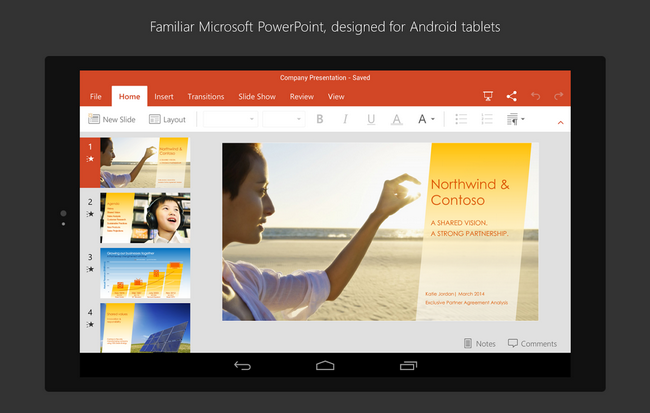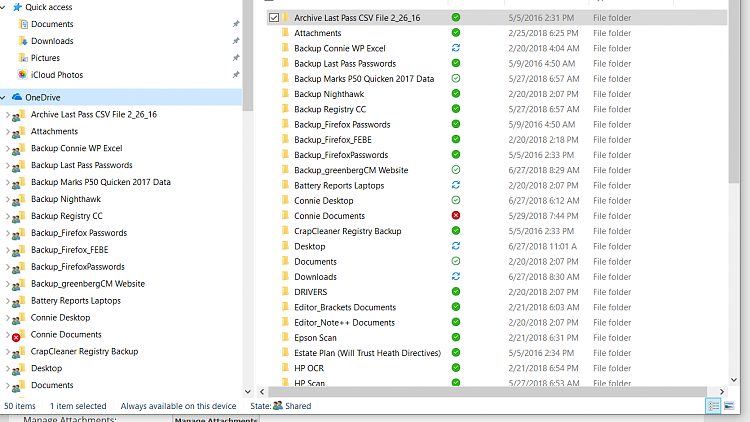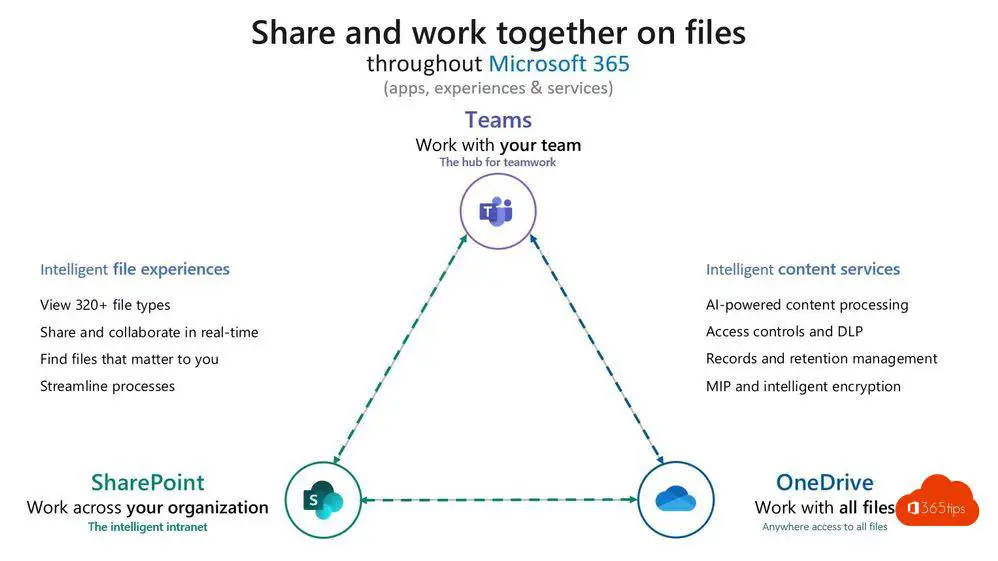As an NC State student, faculty or staff member, you can download and install a free copy of the full MS Office suite (includes Word, Excel and PowerPoint), and you also have access to the cloud versions of these products (Office 365).
- Office 365 One Drive Link
- Office 365 Drive Space
- Office 365 Drive Space
- Office 365 Drive Mapping
- Office 365 Drive Shipping
- Office 365 One Drive Setup
- Office 365 Drive Shipping
Your free copy of Office 365 can be installed on multiple devices and comes with online file storage space in OneDrive.
NOTE: G Suite is the university’s primary collaborative application suite. OIT recommends that you use G Suite for collaboration instead of Office 365.
Contents
Get your copy
- Oct 29, 2019 One of the benefits of having Office 365 is its ability to save to OneDrive. Thanks to the power of Microsoft's cloud, you can have your documents save automatically, and even recover lost files.
- Collaborate for free with online versions of Microsoft Word, PowerPoint, Excel, and OneNote. Save documents, spreadsheets, and presentations online, in OneDrive.
- Go to:
office365.ncsu.edu. - Sign in with your Unity ID and password.
- Choose one of these two options for working with Office 365:
- Option 1 – To download and install MS Office and work locally:
- On a personally-owned computer:
Choose the product to install and follow the instructions on the screen. - On a university-owned computer:
Contact your local IT staff before attempting to install Office on it.
- On a personally-owned computer:
- Option 2 – To work in the cloud without downloading and installing MS Office:
Be aware that you’ll be using limited versions of Word, Excel and PowerPoint.
- Option 1 – To download and install MS Office and work locally:
Migrate Google Drive to Office 365 (OneDrive for Business) The manual way to move or export Google Drive documents or files to the cloud destination of Microsoft includes two stages. In the first stage, you need to access Google Drive online and download Google Drive files (as a zip file). Access to Office 365 and a Copy of Office As an NC State student, faculty or staff member, you can download and install a free copy of the full MS Office suite (includes Word, Excel and PowerPoint), and you also have access to the cloud versions of these products (Office 365). Click on the password field and you will be redirected to the Florida State Office 365 sign-in; On the FSU sign in window, enter your FSUID@fsu.edu email address and select Next On the next page, enter your FSUID password and select Sign In Map your OneDrive for Business using File Explorer. Open the Start Menu.
Install on multiple devices
You can install the Office suite on up to ten devices, including personal ones:
- five PCs or Macs
AND - five smartphones or tablets (see Help below for links).
Mobile Setup
Office 365 features that are not available at NC State
- Exchange, including email and calendar
Keep your Office copy activated
If you downloaded and installed the full Office suite on your PC or Mac, be sure to keep it activated by connecting to the internet at least once every 30 days.
Working online
- Use newer browsers:
- Be aware that features are limited in online versions of Word, Excel and PowerPoint.
- You have 1 TB (1000 GB) of personal space in OneDrive, the online space connected with Office 365.
- Documents you create online will be stored online.
Storing sensitive data
- In general, Cloud storage space (e.g., OneDrive) may not be secure.
See Storage Locations for University Data for details. - DO NOT store any sensitive information in the Cloud;
e.g., Social Security numbers, credit card numbers, passwords. - University employees who handle sensitive data:
See “Cloud service” in the table of Storage Locations for University Data
Collaboration
- Be sure to use G Suite instead of Office 365 to share documents and work collaboratively.
- G Suite remains OIT’s primary collaboration and communication tool for campus.
When you leave NC State
You will lose access to your Office 365 account and any data or information stored within. This information may not be retrievable after your access is lost.
- Disposition of files stored in OneDrive
- Students
- Transfer personal data to other locations; e.g., local computer, a personal G Suite account, or a personal Office 365 account.
- Only graduating students who complete a degree program with NC State will maintain access to their NC State G Suite account as a potential transfer location. See Extended access for new graduates for more information.
- Employees
- Transfer any university or department data and files to your supervisor or any other appropriate department file storage location.
See the Separating Employee Guide. - Transfer personal data to other locations; e.g., local computer, or a personal G Suite account, or a personal Office 365 account.
- Transfer any university or department data and files to your supervisor or any other appropriate department file storage location.
- Students
- Additional Resources
Help
- For PC: Office Quick Start Guides
- For Mac: Office for Mac Quick Start Guides
- For mobile:
One of the best ways to set up file storage and sharing for your business is to use OneDrive and a team site together. This is ideal if you have a small business with a few employees.
Watch a short video about storing files in the Microsoft 365 cloud.
If you found this video helpful, check out the complete training series for small businesses and those new to Microsoft 365.
'Microsoft 365 document storage and management'


OneDrive is designed for individual use, with the occasional sharing of files.
A team site is designed for sharing and collaborating on files regularly. A team site is ideal for storing files that have shared ownership where several people own the files and might collaborate on them. Create a Microsoft Team to add a team site. Learn more at Create a team in Teams.

Both OneDrive and team sites provide anywhere access for you and your employees.
Here are recommendations for what to store in each location when you use OneDrive and team sites together:

| Storage location | What it's for | What to store here |
| OneDrive | Storing content in OneDrive is like storing files on your computer; no one else can easily access them. For more info, see What is OneDrive for Business? | Business files that other team members won't need to collaborate on or access regularly. |
| SharePoint team sites | Collaboration. When you create a Microsoft 365 group (for example, in the Microsoft 365 admin center, in Outlook, or by creating a team in Microsoft Teams), a SharePoint team site is created for that group. Likewise, when you create a new SharePoint team site from the SharePoint home page or from the new SharePoint admin center, it also creates a Microsoft 365 group. For more info, see What is a SharePoint team site? and Create a team site in SharePoint Online. | Files that have shared ownership. We recommend separate team sites for each unit of work in your organization. For example, to keep personnel and financial documents private to a small team, create a separate team site. |
Note
SharePoint also has other types of sites you can use for your business. You can use communication sites in your intranet to publish information for a broad audience. And you can use hub sites to connect sites in your intranet.
Office 365 One Drive Link
Start using OneDrive and your team site
Team members can store their own files in OneDrive
Each person in your business who has a Microsoft 365 license assigned (and SharePoint Online selected) gets OneDrive cloud storage. They can store business-related files here for access from any device, and they are only available to that user. For example, they might store a draft proposal, their meeting notes, or the script for a demo they're going to deliver.
Employees can also share OneDrive files and folders. If an employee is away or leaves the company, others can access shared files stored in OneDrive (OneDrive team folder sharing).
Here's how each person on your team can set up OneDrive and share files.
Office 365 Drive Space
Go to the Microsoft 365 Portal, and sign in with your user name and password.
From the App launcher, select OneDrive.
In OneDrive, team members can store their own business-related files. You can share either individual files, or a whole folder. Pick a file or folder, right-click, and then choose Share.
On the Send Link page, leave the default selection Anyone with the link can view and edit.
Type names or email addresses of team members who you want to have access to the folder, and add an optional message.
If you want your own copy of the email that will be sent, add your email address to the list.
When you're done entering who you want to share with, select Send. The email is immediately sent to the people you invite.
Here's what the email looks like.
Upload files to a team site for online collaboration
Team sites come with a place to store files, called a document library.
Here are the steps to add files:
On the home page of your team site, choose Documents from the left-hand navigation menu. This will take you to your Documents library.
While you're still signed in to Microsoft 365, open Windows File Explorer from your taskbar or other location. Go to the files you want to upload to your team site.
Select the files you want to upload to your team site, and then drag them to the Document library.
When you're done, the files will be stored in both your team site and your computer.
You can delete the files from your computer. In the next step, Sync online files with your PC or Mac, you're going to create a new location for these files on your computer.
If you have numerous files or large files to upload to your team site, read these tips on uploading large or many files to a library.
If you need more storage space, see Change storage space for your subscription.
Sync online files with your PC or Mac
Now that you have files on your team site, you can set them up to sync with your PC or Mac. This way, you can work on your files from your PC or Mac instead of working in Microsoft Edge, Chrome, or another browser. It's also useful to have a version of your files synced on your computer for situations when you need to get to a file and you aren't connected to the Internet.
After you set up files to sync with your computer, when you're connected to the Internet, they'll be synchronized automatically.
Here's how to synchronize files on your team site with your desktop:
On the home page of your team site, choose Documents from the left-hand navigation menu. This takes you to your Documents library.
Tip
When syncing files on your team site, you're syncing each file library on the site, not the entire site.
Choose Sync to synchronize all the files. Or browse to the specific folder you want to sync.
If prompted to switch apps, choose Yes. OneDrive is the process doing the synchronization.
If you then get a Set up OneDrive prompt, sign in with your work or school account.
If you haven't yet synced your OneDrive, you might see a This is your OneDrive folder screen. Check the path under Your OneDrive folder is here. Choose Change Location if you want to use a different path, and then select Next.
The files in your team sites will appear in the left pane of File Explorer under the name of your organization. The files in OneDrive will appear under 'OneDrive - <Name of Organization>'
Test the synchronization by opening a file in the team's folder on your computer. Make a change, and then choose Save.
Best practices for file storage and sharing
Here are a few tips for getting the most from OneDrive or your SharePoint team site.
File storage and collaboration recommendations for other types of small businesses
Sole proprietorships: Use OneDrive to store your own files and share them with customers on a case-by-case basis.
Co-ownerships: Both owners use OneDrive and share files back and forth.
Businesses with external clients or partners who need access to files: Create a new team site to store and share documents intended for a specific customer. Set up the site to allow access to only that customer. You then don't need to worry that one customer will accidentally get access to information intended for another customer.
Office 365 Drive Space
Keep private files private
When you store a file in OneDrive it's only accessible by you, unless you share it with others. When you share files, you can choose to create a link that can be forwarded, or to share with only specific people. You can also create separate folders in OneDrive for different purposes such as public, personal, or for individual projects. Each folder can be shared with a different person or group, or nobody else at all.
For more information on sharing, also see Share files and folders with Microsoft 365.
Track how much space you have left
To see how much storage space you have left in OneDrive, see Manage your OneDrive for Business storage.
Office 365 Drive Mapping
What files can be stored in OneDrive and a team site?
While you can upload almost all types of files, some file names and characters in file names aren't allowed. For more info, see Invalid file characters and file types in OneDrive for Business.
Enable or disable third-party storage services
You can enable third-party storage for your users in Microsoft 365 so they can store and share documents using services like Dropbox in addition to OneDrive and team sites. This can be a great way to provide services that your users may already be using or prefer to use for business projects. If you don't want people in your organization using Office to open files in a third-party service, follow these steps to turn it off.
Important
Third-party storage is enabled by default so you need to perform these steps right away if you don't want it available to your users.
Office 365 Drive Shipping
Sign in to to the admin center.
Go to the Settings > Org settings page.
On the Services tab, select Office on the web.
Select or deselect the check box to turn third-party storage on or off, then select Save changes.
Office 365 One Drive Setup
Next steps
Office 365 Drive Shipping
Customize your team site for file storage and sharing. This step-by-step tutorial shows you how to you can take advantage of more storage and collaboration features.
Set up Office apps on your tablets and phones. You need to do this so you can edit files that are stored in OneDrive and on team sites from your tablet or phone. If you don't install the Office apps for your tablet or phone, you'll be able to view the files but not edit them.
